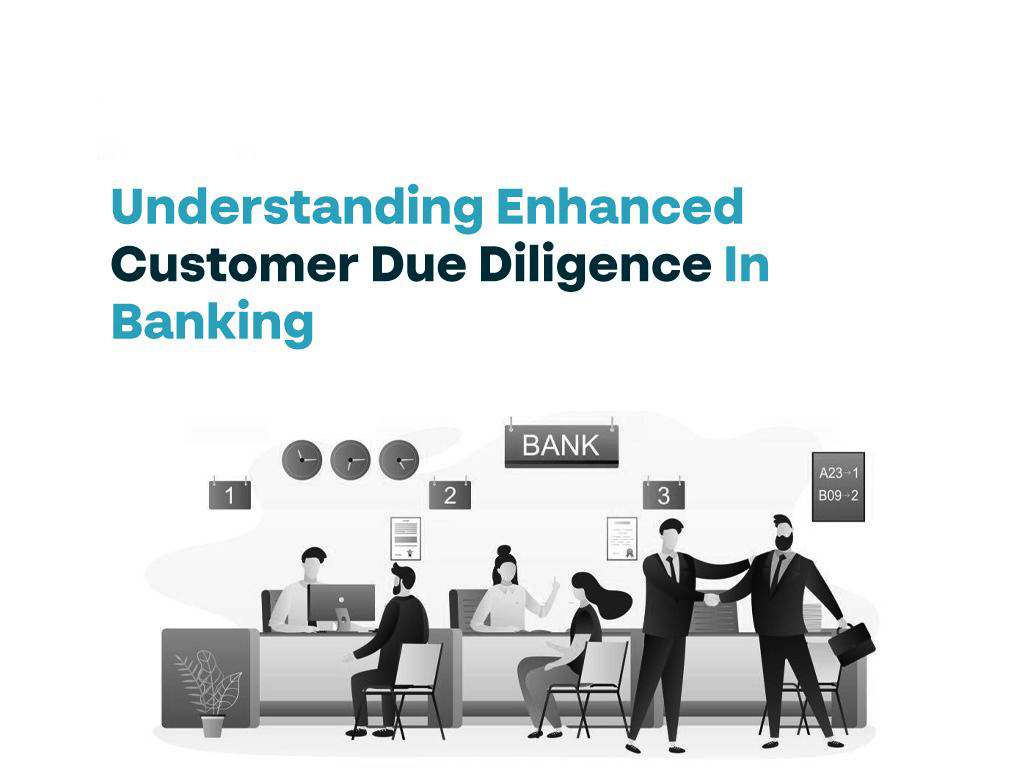

Finance
What Is Pledge In Banking
Published: October 11, 2023
Learn about the concept of pledge in banking and its significance in finance. Gain insights on how pledge agreements work and their impact on financial transactions.
(Many of the links in this article redirect to a specific reviewed product. Your purchase of these products through affiliate links helps to generate commission for LiveWell, at no extra cost. Learn more)
Table of Contents
- Introduction
- Definition of Pledge in Banking
- Purpose of Pledge in Banking
- Types of Pledges in Banking
- Procedure of Creating a Pledge in Banking
- Rights and Obligations of the Pledgee and Pledgor
- Termination and Release of Pledges in Banking
- Importance of Pledge in Banking
- Examples of Pledge in Banking
- Conclusion
Introduction
When it comes to the world of banking and finance, numerous terms and concepts can be quite daunting and confusing. One such term is “pledge.” In the context of banking, pledge refers to a legal agreement where a borrower provides an asset as collateral to the lender to secure a loan or credit facility.
The concept of pledge in banking plays a crucial role in providing security to financial institutions and ensuring the repayment of loans. It offers a layer of protection for the lender should the borrower default on the loan. Additionally, pledge acts as a means of safeguarding the interests of both parties involved in the transaction.
In this article, we will delve deeper into the meaning of pledge in banking, the different types of pledges, the process involved in creating a pledge, and the rights and obligations of both the pledgee (lender) and the pledgor (borrower). We will also explore the termination and release of pledges and highlight the significance of pledges in the realm of banking.
Understanding the concept of pledge in banking is crucial for borrowers and lenders alike, as it impacts the terms and conditions of loan agreements, the interest rates offered, and the overall risk associated with the financial transaction. Whether you are an individual looking to secure a personal loan or a business seeking a line of credit, the information presented in this article will undoubtedly add value to your knowledge of banking and finance.
Definition of Pledge in Banking
In the world of banking, a pledge refers to a legal arrangement where a borrower offers an asset as collateral to secure a loan or credit facility from a lender. The asset, referred to as the pledged asset, can take various forms, such as real estate, vehicles, jewelry, or even financial instruments like stocks or bonds.
By pledging an asset, the borrower provides a guarantee to the lender that if they default on the loan, the lender can seize and sell the pledged asset to recover the outstanding debt. This gives the lender a level of assurance and mitigates the risk associated with lending money.
It is essential to note that the ownership of the pledged asset remains with the borrower throughout the loan period. However, the lender is granted a lien over the asset, which gives them the right to take possession or sell the asset in case of default.
The terms and conditions of a pledge are typically outlined in a legal agreement, often referred to as a pledge agreement or a pledge deed. This document specifies the details of the pledge, including the type and value of the pledged asset, the amount of the loan, the interest rate, and the repayment terms.
Purpose of Pledge in Banking
The main purpose of a pledge in banking is to provide security to the lender by creating a legal right over the borrower’s assets. This security ensures that the lender has a means of recovering their funds if the borrower fails to repay the loan as agreed. Let’s explore the key purposes of a pledge in banking:
- Reducing Lending Risk: By requiring borrowers to pledge assets as collateral, lenders reduce their lending risk. If a borrower defaults on the loan, the lender has the right to seize and sell the pledged asset to recover the outstanding amount. This significantly reduces the risk of loss for the lender.
- Ensuring Repayment: Pledge acts as a strong incentive for borrowers to repay their loans. Since they have valuable assets at stake, borrowers are motivated to honor their loan obligations. They understand that defaulting on the loan may result in the loss of their pledged assets.
- Lower Interest Rates: The presence of a pledge reduces the lender’s risk, which can lead to lower interest rates for borrowers. Lenders may be more willing to offer competitive interest rates when they have the security of a pledged asset.
- Access to Credit: Pledge enables borrowers to obtain credit that they may not otherwise have qualified for. By offering valuable assets as collateral, borrowers who may have insufficient credit history or lower credit scores can secure loans more easily.
- Supporting Business Growth: Pledge plays a vital role in fostering business growth. For businesses, it allows them to access funding necessary for expansion, purchasing inventory, or investing in new projects. The availability of pledged assets increases their creditworthiness and strengthens their financial position.
Overall, the purpose of a pledge in banking is to strike a balance between providing access to credit for borrowers and mitigating the risk for lenders. It creates a mutually beneficial arrangement where borrowers can obtain funds while lenders have a higher level of assurance to protect their interests.
Types of Pledges in Banking
In the realm of banking, there are several types of pledges that borrowers can use to secure their loans. These types differ based on the nature of the pledged assets and the specific terms of the pledge agreement. Let’s explore some common types of pledges:
- Real Estate Pledge: In this type of pledge, borrowers offer their real estate properties, such as land, houses, or commercial buildings, as collateral for a loan. This type of pledge is commonly used in mortgage loans, where the property itself serves as security.
- Vehicle Pledge: Vehicle pledge involves using automobiles, motorcycles, or other vehicles as collateral for a loan. The lender has the right to seize and sell the pledged vehicle if the borrower defaults on the loan.
- Financial Instrument Pledge: This type of pledge uses financial instruments like stocks, bonds, or mutual funds as collateral for a loan. The lender gains the authority to sell the pledged securities if the borrower fails to fulfill their repayment obligations.
- Jewelry and Valuables Pledge: Borrowers may pledge valuable items such as jewelry, artwork, or other high-value assets to secure a loan. These items are appraised for their worth, and the lender can claim and sell them if necessary.
- Warehouse Receipt Pledge: In certain financing arrangements, borrowers can pledge warehouse receipts as collateral. This is common in commodities trading, where the receipt represents stored goods that can be sold to repay the loan.
- Accounts Receivable Pledge: Businesses often pledge their accounts receivable, which are outstanding customer invoices, as collateral for a loan. This allows the lender to take possession of the receivables or collect payments directly from the borrowers if the need arises.
It is important to note that the acceptability of different types of pledges may vary depending on the lender’s policies and the nature of the loan. Lenders typically evaluate the value, marketability, and durability of the pledged assets to determine their suitability as collateral.
Before entering into a pledge agreement, borrowers should carefully consider the type of asset they are pledging and understand the potential consequences of defaulting on their loan obligations. Lenders, on the other hand, must assess the risks associated with different types of pledges and ensure that the value of the pledged assets is sufficient to cover the loan amount.
Procedure of Creating a Pledge in Banking
The process of creating a pledge in banking involves a series of steps that ensure the legal establishment of the collateral arrangement. This procedure involves both the borrower and the lender and typically follows these general steps:
- Loan Application: The borrower initiates the process by submitting a loan application to the lender. The application includes information about the borrower’s financial position, the purpose of the loan, and the proposed collateral. The lender evaluates the application to determine the feasibility of the loan.
- Preliminary Assessment: The lender conducts a preliminary assessment of the proposed collateral. They evaluate factors such as the value, marketability, and condition of the asset to determine its suitability as collateral. This assessment helps the lender estimate the loan-to-value ratio and the acceptable loan amount.
- Pledge Agreement: Once the loan application is approved, the borrower and the lender enter into a pledge agreement. This legal document outlines the terms and conditions of the pledge, including the details of the pledged asset, the loan amount, the interest rate, and the repayment terms. The agreement also specifies the rights and obligations of both parties.
- Valuation and Appraisal: The pledged asset undergoes a valuation and appraisal process to determine its current market value. This step ensures that the asset provides adequate security for the loan. A qualified appraiser assesses the asset and provides an official valuation report that becomes a part of the pledge agreement.
- Custody or Registration: Depending on the type of asset, it may be physically handed over to the lender for safekeeping or stored in a designated location agreed upon in the pledge agreement. In some cases, registration of the pledge may be required with relevant authorities, such as the land registry for real estate pledges.
- Loan Disbursement: Once the pledge is established, and all formalities are completed, the lender disburses the loan amount to the borrower. The borrower can now utilize the funds for the intended purpose.
- Loan Repayment: The borrower is responsible for repaying the loan amount within the agreed timeframe. Failure to do so can lead to default and potential loss of the pledged asset.
- Release or Transfer of Pledge: Once the borrower fulfills their loan obligations, the pledge is released, and the ownership of the asset reverts back to the borrower. This release is typically documented, and the lender provides a written acknowledgment of the release of the pledge.
It is essential for both borrowers and lenders to carefully follow the procedure of creating a pledge in banking. This ensures that the pledge is legally binding and provides the necessary protection and security for both parties involved in the transaction.
Rights and Obligations of the Pledgee and Pledgor
When entering into a pledge agreement, both the pledgee (lender) and pledgor (borrower) have certain rights and obligations that are outlined in the agreement. These rights and obligations govern their roles and responsibilities throughout the duration of the pledge. Let’s explore the rights and obligations of each party:
Rights of the Pledgee (Lender):
- The right to possess and hold the pledged asset during the duration of the pledge.
- The right to sell or dispose of the pledged asset upon default by the pledgor.
- The right to receive payment for the outstanding loan amount from the proceeds of the sale of the pledged asset.
- The right to charge interest on the loan amount as agreed upon in the pledge agreement.
- The right to take legal action against the pledgor to recover any outstanding debt or losses.
Obligations of the Pledgee (Lender):
- The obligation to exercise reasonable care in safeguarding and preserving the pledged asset.
- The obligation to provide a written acknowledgment of the release or termination of the pledge upon repayment of the loan.
- The obligation to comply with any legal or regulatory requirements related to the pledge.
- The obligation to act in good faith and in accordance with the terms and conditions of the pledge agreement.
- The obligation to respect the rights and privacy of the pledgor throughout the duration of the pledge.
Rights of the Pledgor (Borrower):
- The right to retain ownership of the pledged asset during the duration of the pledge.
- The right to use the pledged asset for its intended purpose, as long as it does not compromise its value or condition.
- The right to receive any surplus funds from the sale of the pledged asset after the loan amount and associated costs are repaid.
- The right to request an update on the outstanding loan balance and any actions taken by the pledgee regarding the pledge.
- The right to have the pledged asset returned upon full repayment of the loan amount and the release of the pledge.
Obligations of the Pledgor (Borrower):
- The obligation to repay the loan amount and interest as per the agreed terms and schedule.
- The obligation to notify the pledgee of any change in the ownership or condition of the pledged asset.
- The obligation to maintain the pledged asset in good condition and keep it insured (if required) throughout the duration of the pledge.
- The obligation to comply with all terms and conditions stated in the pledge agreement.
- The obligation to inform the pledgee of any potential events or circumstances that may impact the value or possession of the pledged asset.
Clear understanding and communication of these rights and obligations are essential for both the pledgee and pledgor to ensure a smooth and transparent lending process. It is recommended that borrowers and lenders carefully review and negotiate the terms of the pledge agreement to ensure that their rights and obligations are adequately addressed.
Termination and Release of Pledges in Banking
After the borrower fulfills their loan obligations, the pledge can be terminated and released. This process involves the lender relinquishing their rights over the pledged asset and returning it to the borrower. Let’s explore the steps involved in the termination and release of pledges in banking:
- Loan Repayment: The borrower must repay the loan amount in full, including any accrued interest and associated costs, according to the terms and conditions specified in the pledge agreement. This ensures that the borrower has fulfilled their financial obligations.
- Request for Release: Once the loan is repaid, the borrower must formally request the release of the pledge. This request can be made in writing, stating the loan account details and expressing their desire to terminate the pledge.
- Lien Release: The lender initiates the lien release process, which involves removing the lien or claim they had over the pledged asset. This step ensures that the borrower regains full ownership and control of the asset, free from any encumbrances.
- Documentation: The lender prepares the necessary documentation to officially release the pledge. This documentation may include a release certificate or a satisfaction of pledge form, indicating the termination of the pledge and the return of the pledged asset to the borrower.
- Return of Pledged Asset: Once the pledge is released, the lender returns the pledged asset to the borrower. The asset should be in the same condition as when it was pledged, barring any normal wear and tear.
- Final Settlement: Both parties should reconcile any remaining outstanding amounts or discrepancies related to the loan and pledge. This ensures that all financial matters are resolved and that there are no lingering obligations between the borrower and lender.
It is important for both parties to maintain clear and accurate records of the loan repayment, release request, and the subsequent termination of the pledge. These records serve as evidence of the transaction and provide protection in case of any future disputes or misunderstandings.
Additionally, borrowers should keep in mind that the release of the pledge may take some time, depending on the internal processes and procedures of the lender. It is advisable to initiate the release request well in advance of needing the pledged asset for other purposes.
By following the proper procedures for the termination and release of pledges, both borrowers and lenders can ensure a smooth transition back to normal ownership of the pledged asset, once the loan has been fully repaid.
Importance of Pledge in Banking
Pledge plays a pivotal role in the realm of banking, offering numerous benefits and serving the interests of both lenders and borrowers. Understanding the importance of pledge helps to appreciate its significance within the banking industry:
- Risk Mitigation: Pledge serves as a risk management tool for lenders. By requiring borrowers to provide assets as collateral, lenders have a form of security that can be utilized in the event of default. This reduces the risk of financial loss and helps to protect the lender’s interests.
- Access to Credit: Pledge allows borrowers to access credit that may otherwise be unavailable to them. By leveraging their assets, borrowers increase their creditworthiness in the eyes of lenders, making it easier to secure loans and credit facilities.
- Lower Interest Rates: With the presence of collateral, lenders are more inclined to offer lower interest rates. The reduced risk associated with a pledge allows lenders to provide better terms to borrowers, resulting in more affordable financing options.
- Flexible Repayment Options: Pledge provides borrowers with greater flexibility in loan repayment. The presence of collateral may enable borrowers to negotiate longer repayment terms, lower monthly installments, or even debt restructuring in certain cases.
- Facilitates Business Growth: Pledge is especially valuable for businesses. It allows them to secure funds for expansion, purchase inventory, or invest in new projects. By leveraging their assets, businesses can access the capital needed to foster growth and take advantage of opportunities.
- Enhances Loan Approval Probability: For borrowers with limited credit history or lower credit scores, pledging assets can significantly improve the likelihood of loan approval. Lenders are more willing to grant credit when they have tangible assets as security.
- Credit Building: Successfully repaying a pledged loan can contribute to building a positive credit history. Timely payments and responsible financial behavior can elevate a borrower’s creditworthiness, making it easier to obtain future credit at favorable terms.
- Protection for Both Parties: Pledge provides a level of protection for both lenders and borrowers. Borrowers have the assurance that their assets are safeguarded, while lenders have the security of knowing they have recourse in case of default.
- Encourages Responsible Financial Behavior: The presence of a pledge encourages borrowers to be more responsible in managing their finances. It emphasizes the importance of honoring loan obligations and instills discipline in maintaining regular payments.
- Strengthened Bank-Lender Relationship: Pledge helps establish a stronger relationship between banks or lenders and their customers. It fosters trust and loyalty by providing borrowers with access to credit while protecting the lender’s financial interests.
By recognizing the importance of pledge in banking, borrowers can leverage their assets to access credit and secure favorable terms, while lenders can mitigate risks and provide lending services with greater confidence. Ultimately, pledge contributes to a healthier and more stable financial ecosystem.
Examples of Pledge in Banking
Pledge is a common practice in the banking industry, and it is utilized in various lending scenarios. Here are a few examples of how pledge is applied in banking:
- Real Estate Mortgages: One of the most common examples of a pledge in banking is a real estate mortgage. In this scenario, a borrower pledges their property as collateral for a home loan or a mortgage. If the borrower defaults on the loan, the lender can initiate foreclosure proceedings and sell the property to recover the outstanding debt.
- Vehicle Financing: When individuals purchase vehicles using loans or financing, they often pledge the vehicle as collateral for the loan. If the borrower fails to repay the loan, the lender has the right to seize and sell the vehicle to recover the outstanding debt.
- Secured Business Loans: In the case of small business loans, lenders may require borrowers to pledge assets such as equipment, inventory, or accounts receivable as collateral. These assets serve as security for the loan and provide the lender with additional protection in case of default.
- Margin Trading: Margin trading, often practiced in stock markets, involves pledging stocks or other financial instruments as collateral for borrowing funds to invest in additional securities. The value of the pledged stocks serves as security for the lender, allowing the investor to leverage their investments.
- Business Lines of Credit: Businesses can obtain a line of credit where they pledge their accounts receivable as collateral. The lender has the right to collect payments directly from the customers if the business fails to fulfill their repayment obligations.
- Jewelry and Valuables Loans: Some banks offer loans where borrowers can pledge high-value assets like jewelry, artwork, or luxury items. These assets secure the loan and serve as collateral, providing the lender with security in the event of default.
These examples highlight the versatility of pledge in banking, where different types of assets can serve as collateral to secure loans or credit facilities. Pledge provides lenders with the necessary assurances and gives borrowers the opportunity to access credit that may not have been available otherwise.
It’s important for both borrowers and lenders to carefully evaluate and consider the terms and conditions of the pledge agreements in these examples. Understanding the implications of pledging assets and the potential consequences of default is crucial for a successful borrowing experience.
Conclusion
In the world of banking, pledge is a fundamental concept that plays a vital role in providing security to lenders and facilitating access to credit for borrowers. It involves the use of assets as collateral to secure loans or credit facilities, creating a mutually beneficial arrangement for both parties involved in the transaction.
Throughout this article, we have explored the various aspects of pledge in banking. We discussed the definition of pledge, its purpose, and the different types of pledges commonly used. We also examined the procedure for creating a pledge, the rights and obligations of the pledgee and pledgor, and the process of terminating and releasing pledges.
The importance of pledge in banking cannot be overstated. It mitigates lending risks, provides borrowers with access to credit, and encourages responsible financial behavior. Pledge serves as a tool for lenders to safeguard their interests while allowing borrowers to leverage their assets to secure funds at favorable terms.
Examples of pledge in banking, such as real estate mortgages, vehicle financing, and secured business loans, further illustrate the practical application and versatility of pledge in different borrowing scenarios.
In conclusion, understanding the concept of pledge in banking is crucial for borrowers and lenders alike. It empowers borrowers to access credit and achieve their financial goals, while lenders can mitigate risks and offer competitive lending solutions. By recognizing the rights, obligations, and procedures involved in creating and terminating pledges, individuals and businesses can navigate the lending landscape with confidence and make informed financial decisions.














